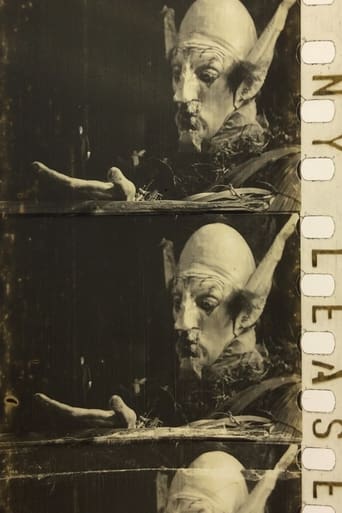He_who_lurks
This 5-minute movie from Edison studios was made eight years after Georges Méliès's "A Trip to the Moon" and while other reviewers have been calling it a knockoff of this film, I disagree. This movie may be much shorter and more simplistic, but the effects are amazing, and honestly are just as good as those in Méliès's film.The story of the movie is very fast-paced and doesn't slow down. Basically, a scientist discovers an anti-gravity formula and uses it on various objects. However, he accidentally spills some on himself and ends up on mars where he's threatened by various tree-like creatures who threaten to snatch him (which are convincing even today). Then, some giant martian gets him and turns him into what looks like a snowball (too bad the edits here were much too obvious) and tries roasting the guy over a fire but he escapes and gets back to earth. There's a twist at the very end where the scientist spills the formula on the floor and makes the room spin.Like I said, amazing effects. Many of them are very convincing even today, and at only 5 minutes this is pretty entertaining (although some of this could come from the fact that the YouTube uploading I've seen had some fun piano music with it). Even today I think most people would find it very watchable--and that's saying something.
ofpsmith
Everyone knows about A Trip to The Moon. One of the first science fiction films it was a major milestone in film history. So when Thomas Edison was making films under his studio he decided to make an All American remake. Instead of a giant bullet, it's a scientist discovering reverse gravity. And instead of going to the moon, he goes to Mars. One step beyond. Well the scientist get's discovered by Martians, and he is soon sent back home by the giant overlord Martian. The scientist throws something on the ground and the room starts to spin. Just saying that description will make you laugh. But still it is pretty impressive. And the special effects are good. It's not as good as A Trip To The Moon but I still have to give it credit.
boblipton
The obvious inspiration for this short film is Georges Melies' 1903 A TRIP TO THE MOON, but while Melies based his movie on a Jules Verne novel, this clearly is based on H.G. Wells' FROM THE EARTH TO THE MOON -- with the names rubbed off and the site of the action changed to avoid lawsuits.Even though we see the same sort of mix of stage and movie magic that Melies used, the purpose has shifted subtly from being special effects that the audience would gape at, to special effects that are used to get from plot point A to plot point B. When chairs float in the air, it is not to frighten and bewilder the audience and the movie's character, but to illustrate the invention of anti-gravity. When the scientist flails about while seeming to fly through outer space, it is to get to Mars. Special effects are no longer the point of the movie. They are part of the grammar.To the modern eye it may look abrupt, but Edison had its own style of editing that it would use until 1913. There were few screen titles used at Edison.Director Ashley Miller seems to have used Edison as a source of income and after they stopped production, gave up the movies. He seems to have had a real career acting and directing on Broadway.
Michael_Elliott
A Trip to Mars (1910) *** (out of 4) This is a fairly interesting picture from Edison about a scientist who discovers a powder that can defy gravity. At first he uses this to move a few objects in his room but then he decides to take a trip to Mars where he encounters some giant tree people and some sort of monster. I'll admit that I'm not quite certain what the monster did to the scientist but it looks like a very early version of a crack pipe. A TRIP TO MARS isn't a masterpiece like A TRIP TO THE MOON but I think fans of the bizarre should enjoy it. The best moments happen when the scientist lands on Mars and we see the giant tree-looking creatures, which were quite cleverly done and look very good. This is when the film turns really strange as this demon thing takes the scientist and smokes something. Again, I'm not sure what he was doing exactly but it was quite effective. This film was made around the same time as Edison's FRANKENSTEIN and the set here looks very similar to the one used in that film so I do wonder if they're the same.
